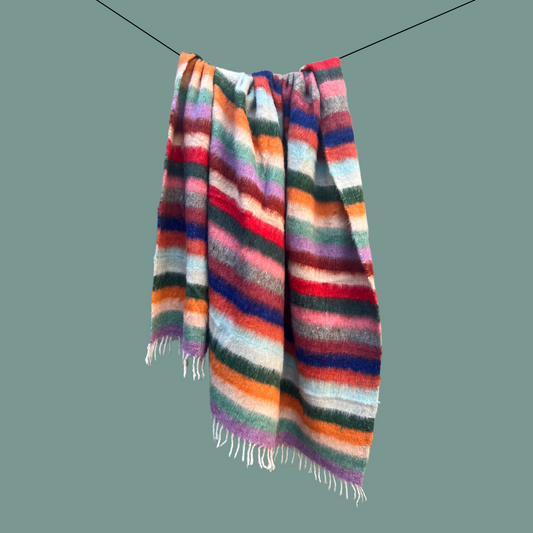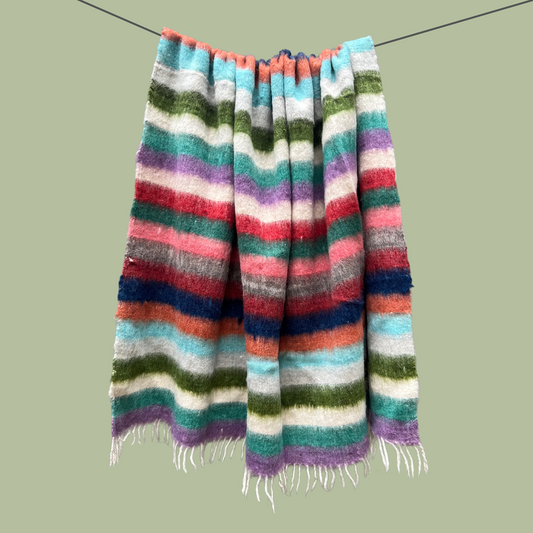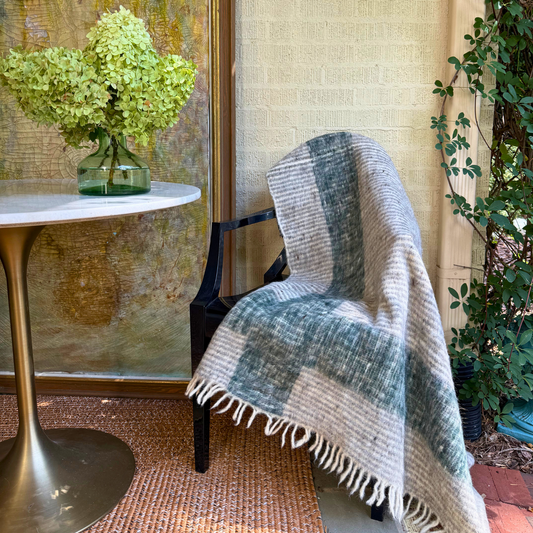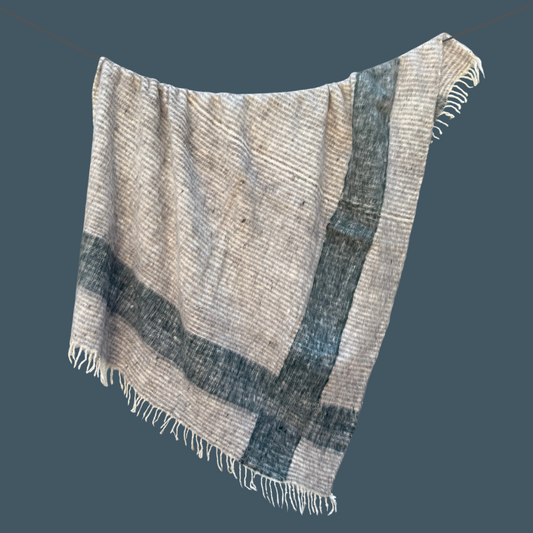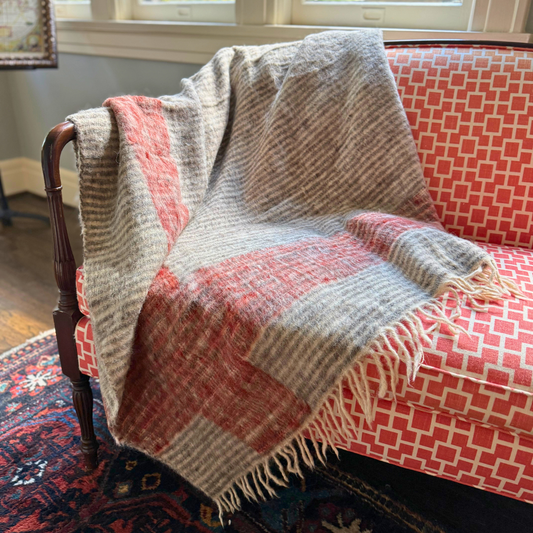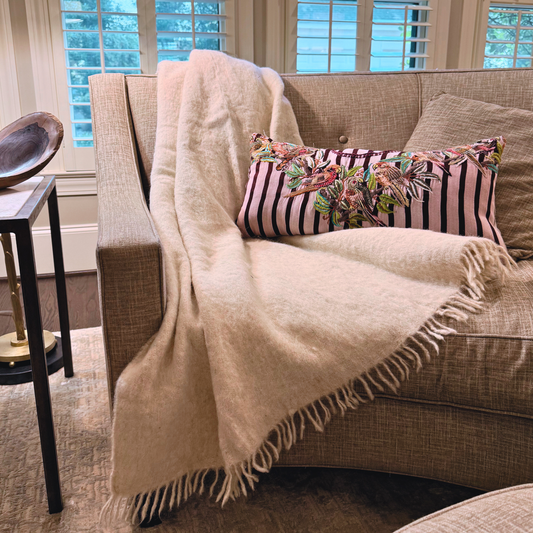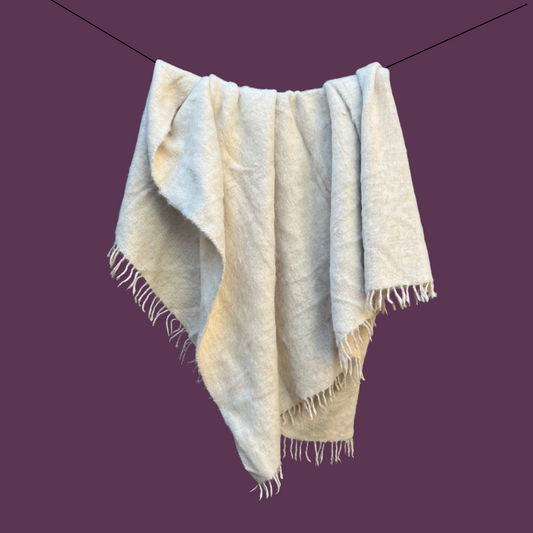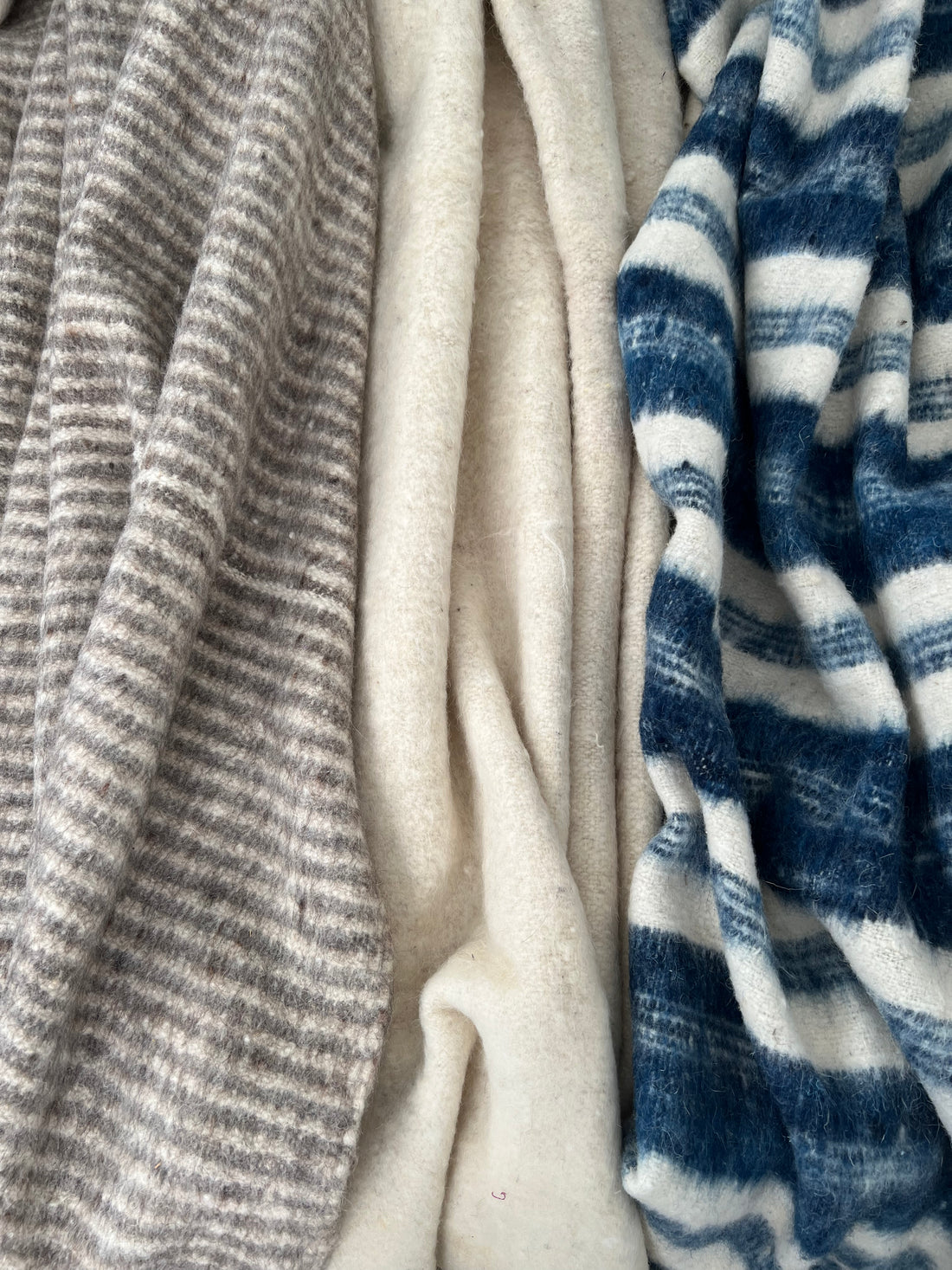
The Making of Momo Blankets
During our March 2022 Guatemala trip, Tiffany and I met Fernanda in the artisan market of Antigua. Her family has been in the business of making wool blankets in Momostenango, Guatemala for generations. Although we were not able to visit Momostenango on our trip, Fernanda told us all about how her family makes these beautiful blankets.
 Ginger inspects a wool rug at Fernanda's family's shop.
Ginger inspects a wool rug at Fernanda's family's shop.
The wool used to make these blankets is of the softest and highest quality, carefully hand-spun by her family in Momostenango. The process of making these blankets starts with the sheep, which are raised in the surrounding highlands. The wool is shorn from the sheep and then cleaned and carded by the artisans. Next, the wool is hand-spun into yarn, which is then dyed using natural dyes made from plants and minerals found in the area.
Once the yarn is dyed, it is ready to be woven into blankets. The blankets are woven on traditional pedal foot looms. A pedal foot loom is more complex than a backstrap loom, the weaver sits on a chair and uses the pedals to control the tension of the loom while they weave. The process is slow and labor-intensive, but it results in blankets that are incredibly soft, warm, and durable.
And let me tell you, the felting process in hot springs is a game changer! Washing the blankets in a hot spring causes the blanket to shrink slightly and the fibers to become more tightly packed together, making the blanket thicker and warmer. The water also helps to soften the wool, making it even more comfortable to use. (Although Tiffany and I didn’t visit a hot spring, we saw one from our van. We also passed through a town near Quetzaltenango where one of the main attractions for Guatemalans is hot showers from the hot springs.)

The final product is a beautiful, high-quality wool blanket that will last for years. Handwoven wool blankets from Momostenango are not only functional, but they are also works of art that are treasured by their owners. They are a perfect example of the traditional craftsmanship of the people of Momostenango.

